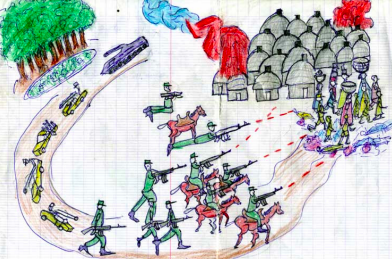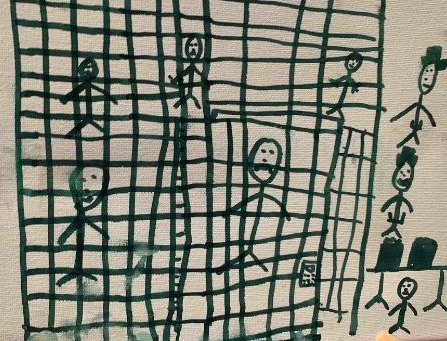Although the events of Spanish civil war were experienced by people 4,000 miles away nearly a century ago, the lessons we take from the conflict and the “Art Beneath the Bombs” do not cease to be relevant today. An estimated 90 percent of global conflict-related deaths since 1990 have been civilians, and 80 percent of these have been women and children. Art therapy has become a common practice for helping children cope with trauma, and youth who have experienced violence frequently represent their experiences in drawings, just as their unfortunate predecessors did during the Spanish Civil War.

The main difference between the children’s drawings of the Spanish Civil War and the drawings proceeding from modern conflicts are that drawings today contain more blood, and the weapons depicted are more deadly. However, unfortunately the social impact of modern drawings has waned in comparison, as contemporary developed societies have become more accustomed and indifferent to the existence of bloody and unjust conflict.

The relatively stable and supportive structure of the school colonies during the Spanish Civil War can be used as an a model for effective and appropriate humanitarian intervention. It is important to foster the creation of productive mechanisms and resources to help children, such a secure sanctuary from war under the supervision of caring adults, access to education, and peer and spiritual support. If a child is exposed to a greater number of protective factors than risk factors during war, the child is more likely to exhibit well-being despite facing adversity and trauma.